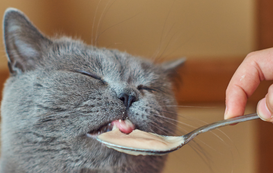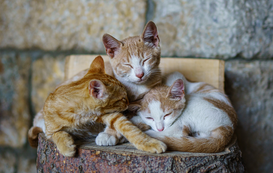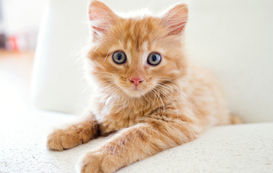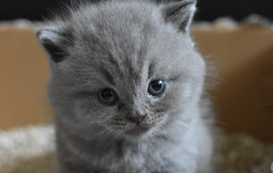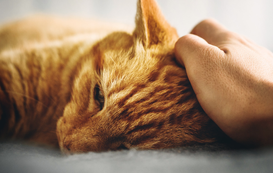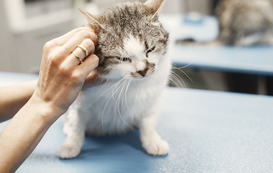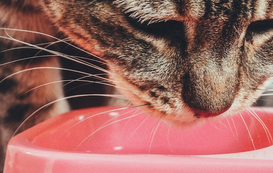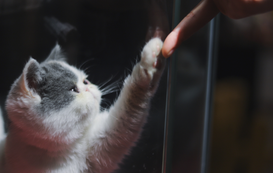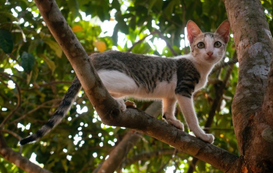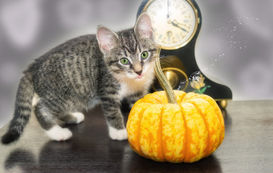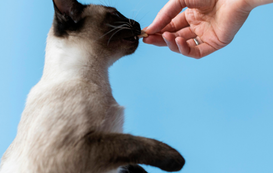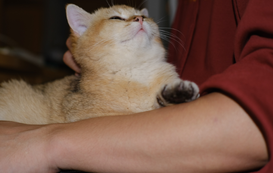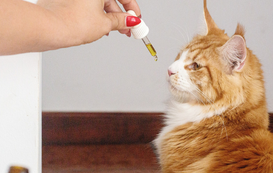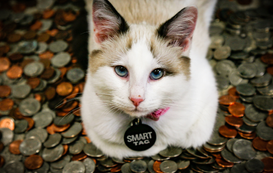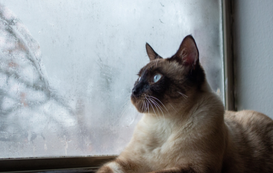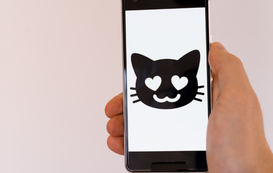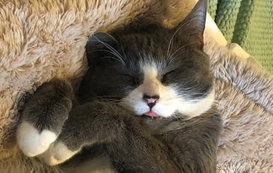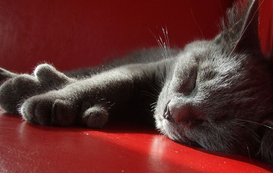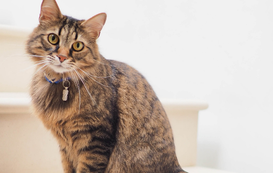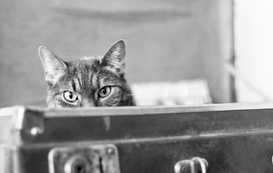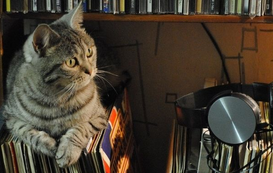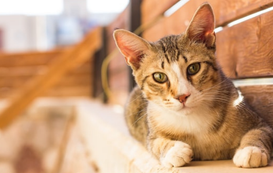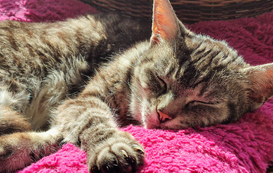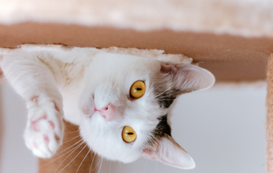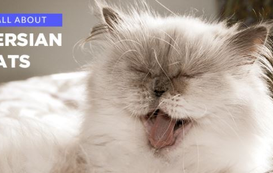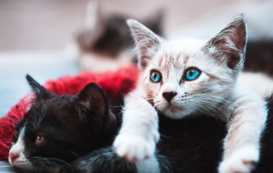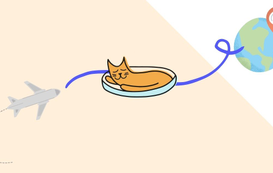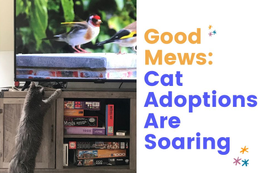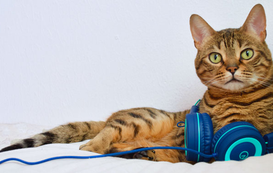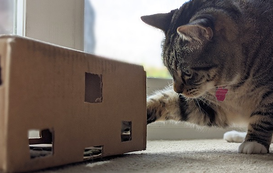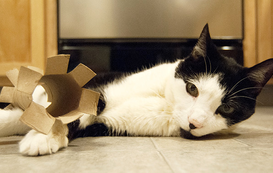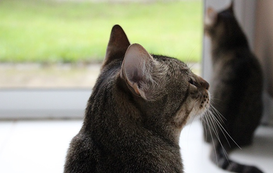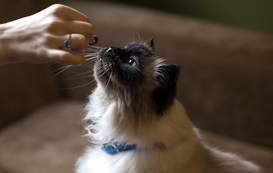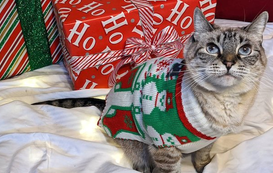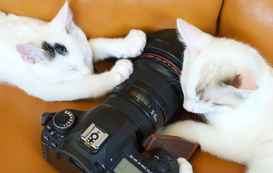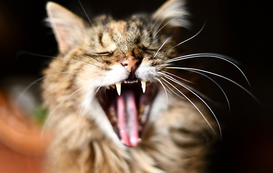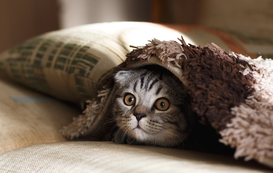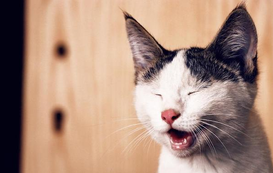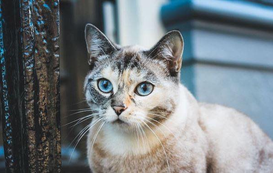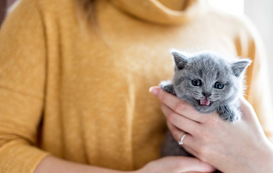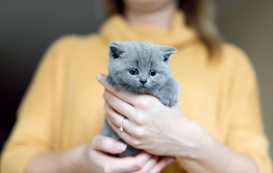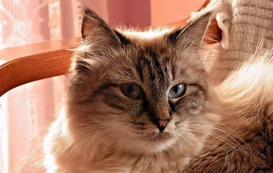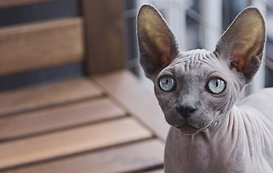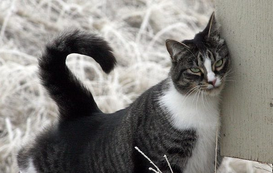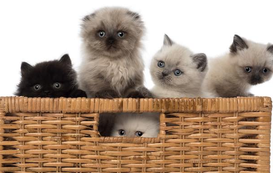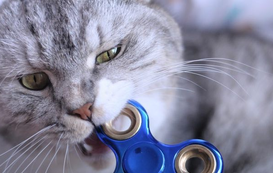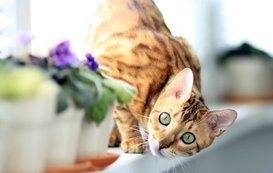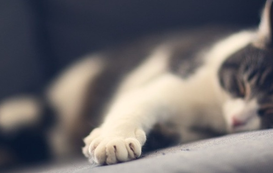- Home
- Cat Sitter Blog
- Cat Health
- Cat Vision: How Does Your Cat See the World?
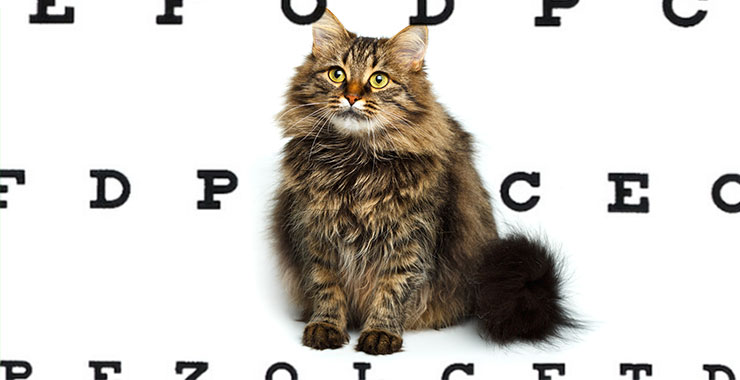

Popular posts
Cat Vision: How Does Your Cat See the World?
In the words of my grandpa, a 94-year old retired eye doctor, “2020 is the year of the optometrist.” I mean, come on that’s probably the best 2020 joke yet; it isn’t cornea at all. Okay, despite my family’s proclivity towards dad jokes, he actually got me thinking about my cat’s vision.
How does Fitz, my cat, see the world? Does he see better than me? Can Fitz see colors? How good is his night vision? What type of vision problems do cats get? With so many questions, I knew I needed to find clarity through the proverbial eye chart of the internet. Thanks to science, veterinarians, and a cat-loving artist, I found my answers.
The Object of My (Cat’s) Eye
Long story short, a cat’s eye is the same basic structure as a human’s eye. Cornea, pupil, iris, lens, retina, and optic nerve are all accounted for; however, it’s the differences in the rods and cones that sets cats apart. For those of you who know nothing about eye anatomy (which was me before reading up on all things cat eyes), Dr. Linda Buzhardt, DVM, of VCA Hospitals breaks it down easily. Located in the retina, cones make it so one can “differentiate colors”, and rods “detect light levels and motion”.1
A cat is known as a dichromatic which means they only have two types of cones in their retinas. Due to only having two types, they see color less vividly than humans do. (And in case you’re wondering, humans have three types of cones to distinguish color). According to Shaunacy Ferro of Popular Science, “From what researchers can tell, cats can see blue and yellow colors, but not red, orange or brown”.2 Summary: they see a duller world compared to us. Think of it like they are colorblind.
Don’t get too worried that your kitty isn’t able to see the royal purples and spicy reds of the world because what they lack in cones, they make up for in rods. Rods are actually what help your kitty see at night. Now granted if it’s pitch black, they aren’t going to see anything, but they have stellar night vision in dim light. Ever wonder why cats are so active at dusk or dawn? Part of the reason is they see really well then. Cornell University College of Veterinary Medicine says that cats light sensitivity is “thought to be about six times greater than that of a human’s.”3 Translation: They can see better in low lighting.
Another component that helps a cat’s light sensitivity is the shape of their eyes. “Their elliptical pupils can open very wide in dim light, but contract to a tiny slit to protect the sensitive retina from bright light.”2b This anatomical feature is actually quite useful in helping them see in all sorts of light conditions.
Motion Detection: Activated
Remember, rods aren’t just for light. They are also for motion. All cat owners know that cats are great hunters whether it’s your hair ties, your toes, or even other small animals. They zero in and then go for kill. Why? Again, it has to do with their rod power because rods also detect motion. That ability to detect fast movements is totally helpful especially since scientists and veterinarians agree that cats are nearsighted. I’ll let Dr. Buzhardt explain again:
When looking at an object from the same distance, the object may appear crisp to us, but blurred to our cats. For example, if a human sees an object clearly from a distance of 100 feet, it will appear blurry to a cat. In fact, the object will not appear sharp until the cat is much closer to it, about 20 feet away.1b
On the other hand though, a cat has amazing depth perception. Cats are known to have binocular vision. This means that due to their eye placement their “visual field is covered by both eyes”. Dr. Ron Ofri, DVM, says that the visual field (or the radius of how much cats can see) is “estimated at 200 [degrees]”. For comparison, this is a few degrees wider than a human’s field of vision.
But, how do cats really see the world?
To get the visual of what I’m talking about, I’m going to turn the artist Nickolay Lamm. He created a series of photographs that replicated how experts believe cats see the world. In his photos, he manipulated the visual field or “the area that can [be seen] when the eyes focus on a single point”, and he lowered the acuity (or the “clearness”) of the photos since cats have to be closer to an object to see it clearer.5 He also dulled the photo’s color since as we know now that cats can only see in limit colors.
Here’s a picture to get a better idea. The top image is what a human sees and the bottom is what the cat sees.
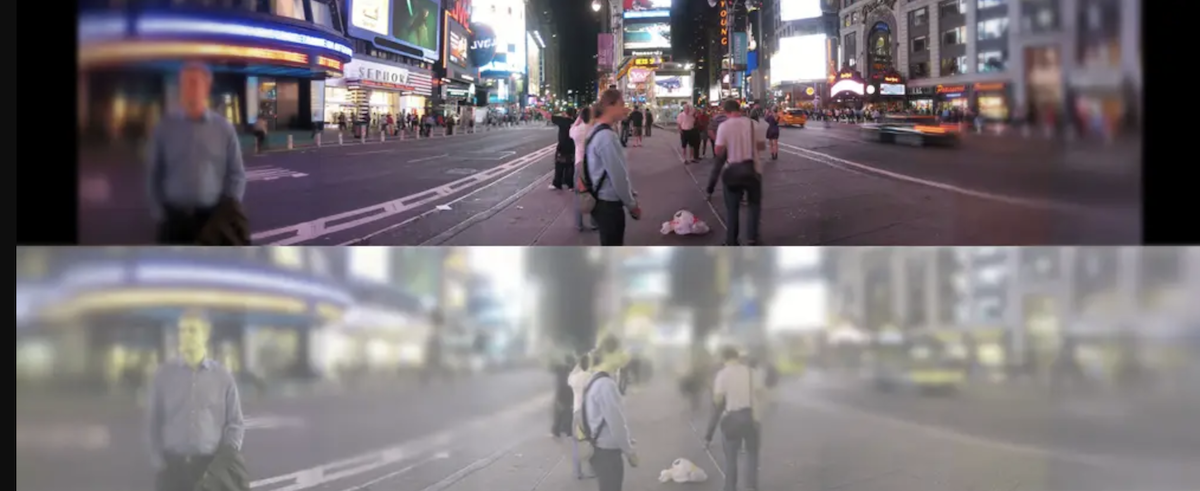
Open Your Cat’s Third Eye(lid)
So, we have rods. We have cones. We have nearsightedness. We have the tapetum lucidum, and you’re probably thinking is that all? In fact, no. It is not. Cats actually have one more unique eye feature, and that’s their third eyelid. Purrhaps, you’ve seen a filmy, moist layer over your cat’s eye? That’s it. That’s what I’m talking about! This layer is important because it “helps keep the surface of a cat’s eyeball moist, protects it from being scratched by erratically growing hairs, and can help shield it during a scrap with a rival cat or other animal.”6
Eye Purrblems
The science behind a cat’s vision is pretty awesome once you break it down, but on a more serious note, cats, like all animals, can develop vision problems. PetMd author Sasha Brown-Worsham says, the four most common vision problems seen in cats are uveitis, retinal detachment, cataract formation, and traumatic eye injuries.7 Cornell University College of Veterinary Medicine adds conjunctivitis to that list. Yet, what are they? Here’s what I found out:
- Conjunctivitis is “an inflammation of the conjunctiva—the mucous membrane that lines the inner surface of the eyelid and the outer surface of the eyeball. This highly contagious condition, usually a by-product of an upper respiratory disease.”6b
- Cataracts are when “the lens gradually clouds up—often impenetrably—and prevents light from entering the eye.”6c
- Retinal Detachment is “a condition in which the retina becomes separated from its underlying tissue.”7
- Traumatic eye injuries can range from a scratched lense to more serious conditions.
- Uveitis is an “inflammation of the middle portion of the eye, which is most often brought on by an infection of some type. These infections include FIP, Felv, or FIV.”7b
If you suspect your cat is experiencing any of these, please see your vet. The earlier an eye problem is diagnosed the higher chance a solution can be found. Cornell University College of Veterinary Medicine advises “owners to keep an eye out for any behavioral or physical indications that a cat is having a vision problem and to report any such signs to a veterinarian without delay.”
Now that we know there is more than meets the eye when it comes to our cat’s vision, monitor their eye health like you would their physical health. Our Meowtel sitters are here to help you and your cat live your best life. If there is something going on with Fluffy’s vision, be sure to mention it during the free Meet and Greet so your sitter knows how to keep her vision clear.
Cat photo by Envato and Eye Chart Graphic by Canva


